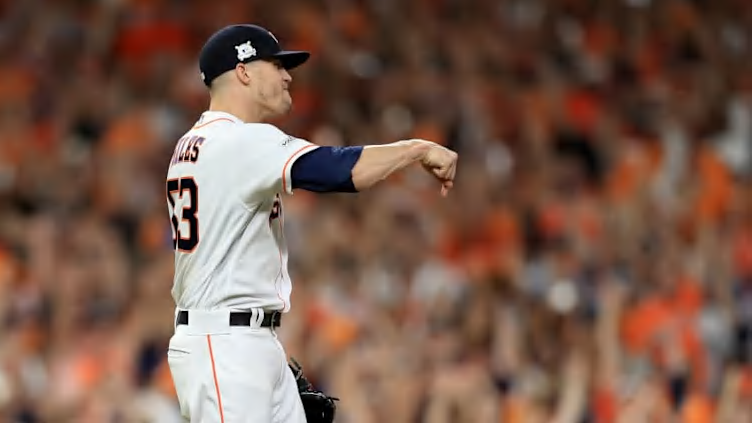Astros: Time to stop the Ken Giles slander

Let’s get one thing straight: Ken Giles was quality reliever in 2017 for the Astros.
The Astros have a perceived bullpen problem this offseason. And that’s partly true.
For one, another left-handed reliever would be nice. The Astros’ front office did address the depth issue with the additions of Joe Smith and Hector Rondon. Both pitchers fit the bill as quality right-handed relievers. Alas, the left side remains to be addressed as we inch closer to the start of Spring Training next month.
That said, the Astros don’t need to acquire another closer. Like Greg Holland. Seriously. The red flags in Holland stand out. But that is for another day, another post.
Ken Giles, for all intent and purposes, should be counted upon as the team’s best reliever until further notice.
/Cue backlash/
I can just hear the complaints coming. I’ve already seen some online. For brevity sake, I did watch Giles’ performance in the postseason. I’m quite familiar with how agonizing it was for the fans, the team and Giles himself. He was simply not good. Ten runs in 7.2 innings shouldn’t cut it in the postseason. And it didn’t. It was that simple. If the Astros would’ve been eliminated at some point, Giles’ struggles would’ve been viewed upon as one of the key reasons.
The postseason struggles, though, should not detract from the success Giles had in the regular season.
If you hop over to the Fangraphs’ split leader boards, you will notice that Giles name is seen quite often in the upper echelon of relievers in 2017. Let’s first examine the strikeout rate, which is important for relievers today. Giles, out of all relievers with at least 30 innings pitched last season, finished 16th with a strikeout rate of 33.6%. That’s not bad.
No, actually, that’s good.
Giles also ranked 13th in FIP at 2.39. He also dropped his home run-to-fly ball rate from 14.5% to 7.4%. That’s impressive in today’s home run environment. He also generated more ground balls by roughly 4.5% as his line drive rate dropped. Fly balls went up a couple percentage points, but that’s not too concerning. Oh, Giles did manage to maintain a .196 batting average against last season. For proper context, Joe Musgrove had a .195 batting average against last season as a reliever. And Musgrove was viewed as a revelation in the bullpen once he made the conversion from the starting rotation.
Giles doesn’t have bad numbers. Quite to the contrary, his numbers are quite solid. While he hasn’t approached the level of Craig Kimbrel or Kenley Jansen, Giles has been fairly close. And it is unrealistic to expect every team to have a Kimbrel or Jensen readily available. There is a reason why the Astros traded for Giles roughly two years ago. A bad postseason, while part of the current narrative, shouldn’t take away from the success Giles has had for his career. Replacing Giles isn’t as easy as one would like to believe.
Next: Springer, McHugh, and Giles will head to arbitration
Looking ahead, the 2018 season is quite vital to Giles in his career. If he continues to show improvement, then the Astros’ arguably top reliever will continue to be atop of the leader boards in various categories. The true test may come in the postseason if the Astros qualify for it once again. If the struggles of the bright postseason lights plague Giles again, then, yes, the organization should re-evaluate the flamethrower.
**Statistics and information courtesy of Fangraphs**